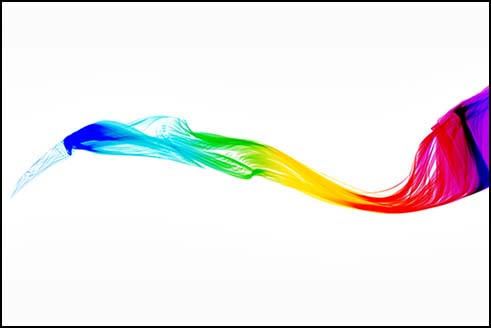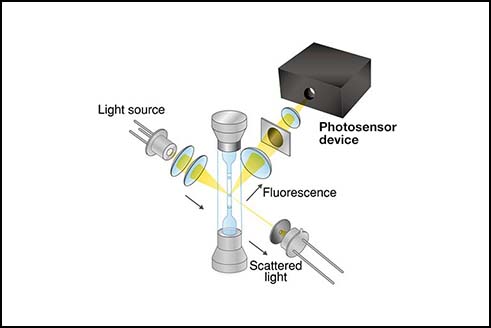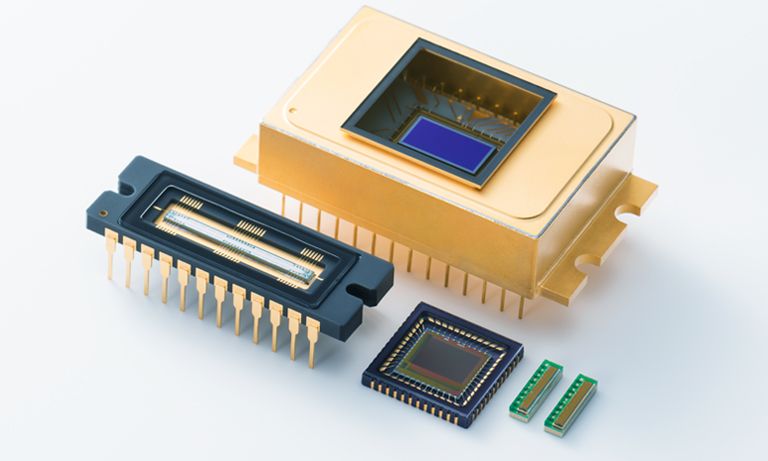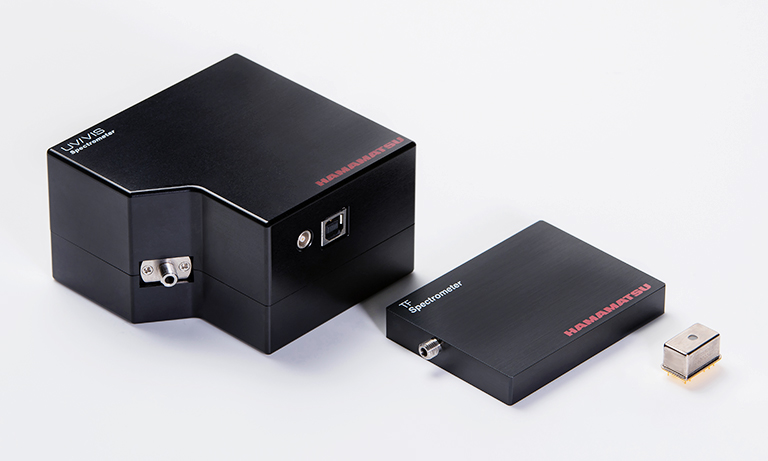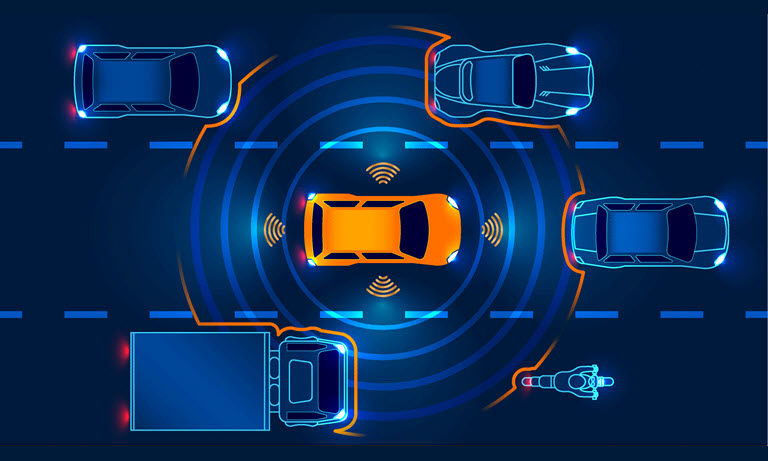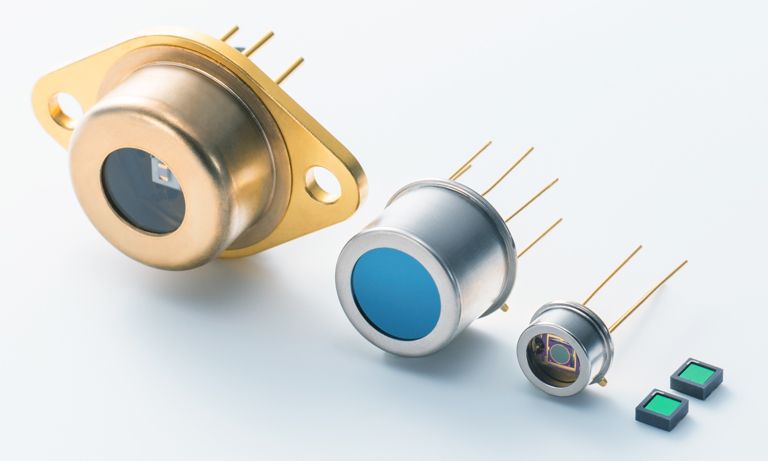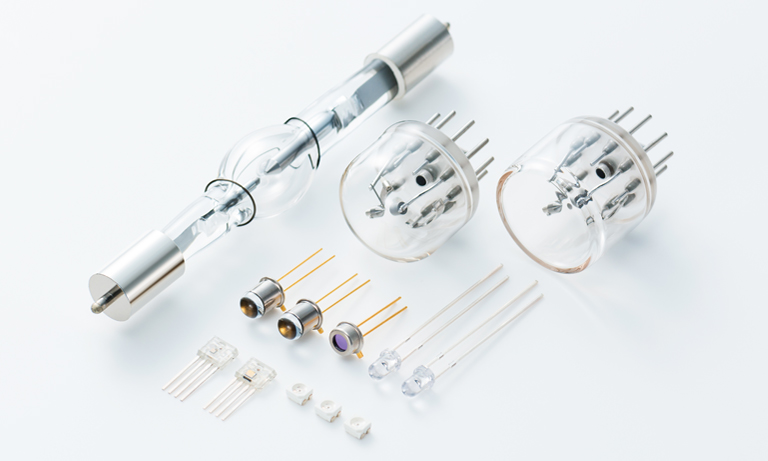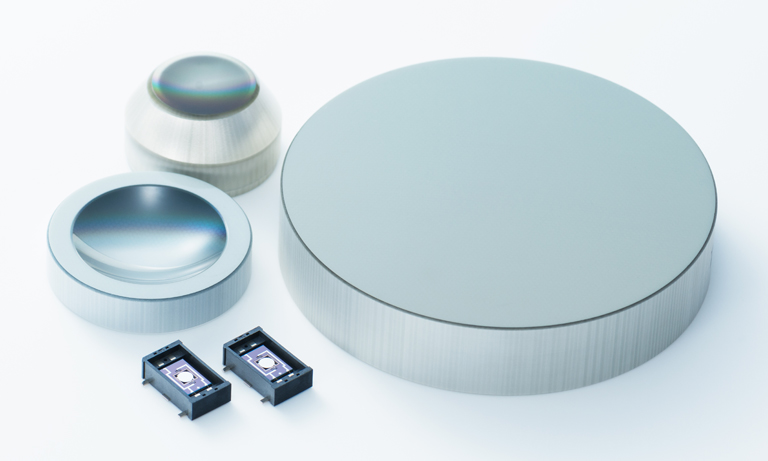Application notes
Technical notes
Ask an engineer
Publications
United States (EN)
Select your region or country.
What are the effects of temperature on dark count rates in an SiPM (MPPC)?
Slawomir Piatek, PhD, Hamamatsu Corporation & New Jersey Institute of Technology
January 3, 2017
Introduction
The silicon photomultiplier (SiPM) is a photodetector sensitive to individual photons due to its very high 105 − 107 internal gain. The source of this gain is Geiger mode operation of avalanche photodiodes (APDs), which, in numbers ranging from 100s to 10,000s, are the main constituent of a SiPM. When a charge carrier (an electron or a hole) enters the high-field section of an APD's depletion region, it may trigger Geiger discharge — an avalanche — which is rapidly put out by the quenching resistor in series with the APD. The output is a current pulse. The charge carrier that triggered the avalanche may have originated from either absorption of a photon or from thermal generation. Although the resulting output pulse is identical in each case, the former process yields potentially useful "signal," whereas the latter results in "noise" referred to as "dark count." This note discusses how changing temperature affects the rate of dark counts in a SiPM.
Origin of dark counts in a SiPM
A dark count is primarily due to a free charge carrier, generated in the APD's depletion layer, that has diffused into the high-field region and triggered Geiger discharge. There are two processes responsible for the generation of a free charge carrier. The first is a trap-assisted generation (Shockley-Read-Hall process) in which an electron transfers from the valence to the conduction band via a state (or trap) within the band gap. The rate of this process is sensitive to temperature and the density and relative energy of the traps. Impurities and lattice defects create the traps. The second process responsible for the generation is a combination of direct and trap-assisted band-to-band tunneling. Here the rate is sensitive to the strength of the electric field and is only weakly dependent on temperature. The two aforementioned processes have comparable contributions at some "corner" temperature; above this temperature, the first process has a greater weight, whereas below, the second does. The corner temperature depends on the architecture of a SiPM and quality of silicon; its value, though, is generally below 0 °C. Given the nature of the two free-carrier generation processes, one expects that the dark count rate (DCR) is a function of both temperature and the bias voltage.
Measurements of dark count rates
Measuring DCR as a function of temperature and bias voltage is a part of the basic characterization of a SiPM. In a normal operation, the bias voltage VBIAS on a SiPM is larger than the APD's breakdown voltage VBD by a few volts; the difference ΔV = VBIAS − VBD is known as "overvoltage." Overvoltage is a key parameter affecting a number of opto-electronic characteristics of a SiPM, including the gain. The gain is linearly proportional to ΔV.
The left panel of Figure 1 shows plots of DCR (in Hz) versus T for several values of ΔV. The SiPM (manufactured by Hamamatsu) has 667 microcells yielding a total photosensitive area of 1.3 × 1.3 mm2. The right panel shows plots of DCR versus ΔV for several values of T. For the temperature range of the experiment, there is an exponential-like dependence of the DCR on T and, for a given T, a linear dependence on ΔV. For ΔV = 1 V and T = 20 °C, the plots imply DCR density of about 150 kHz per mm2. The DCR density for newer SiPMs is a factor of 3 − 4 lower.
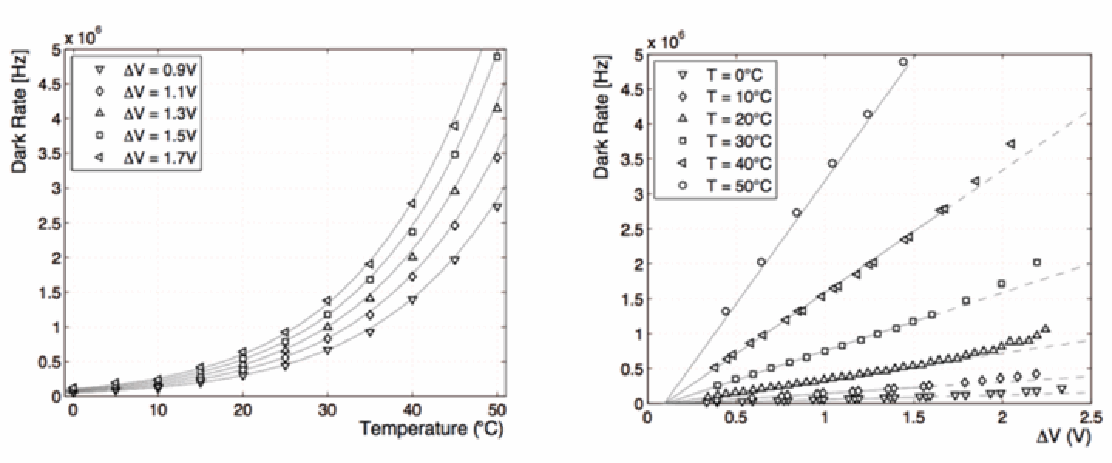
Figure 1. (Left panel) Plots of dark count rate versus temperature for several values of overvoltage. (Right panel) Plots of dark count rate versus overvoltage at several temperatures. Both figures are from Vacheret et al. (2011) for Hamamatsu S10362-11-050C.
If VBIAS is held constant, changing temperature affects the gain of a SiPM because VBD, and, thus, ΔV, is a function of T. To prevent the gain from changing, either the SiPM operates in a temperature-controlled environment or it operates at the ambient temperature but VBIAS is adjusted in response to changing T so that ΔV remains constant. The latter approach may be preferable to users; however, its undesirable aspect is that DCR changes with T and Figure 2 illustrates the rate of change.
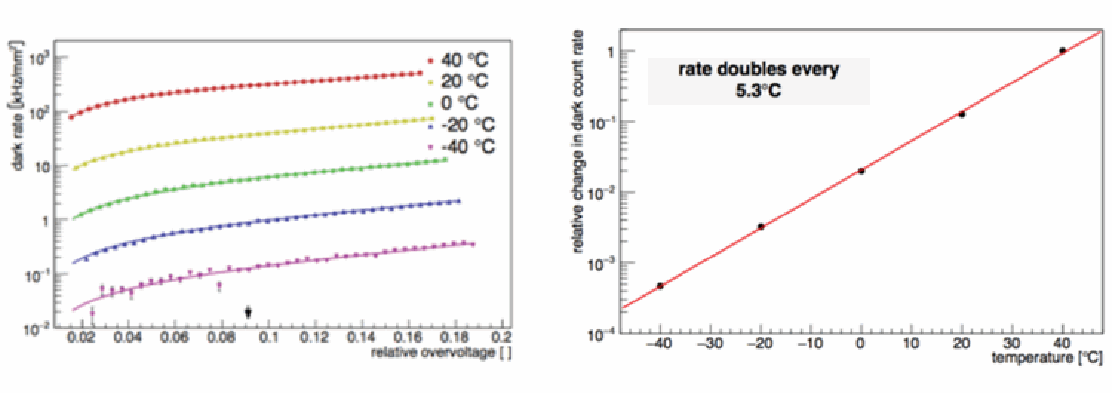
Figure 2. (Left panel) Dark count rate density versus relative overvoltage (ΔV/VBD) for several temperatures. The arrow on the X-axis points to the recommended setting of relative overvoltage. (Right panel) Dark count rate relative to that at 40 °C as a function of temperature at fixed relative overvoltage for Hamamatsu S13360-3050CS SiPM. Source: Otte et al. (2016).
The left panel in Figure 2 shows plots of DCR density as a function of relative overvoltage (ratio of overvoltage and breakdown voltage) for several temperatures. The SiPM is Hamamatsu S13360-3050CS. The right panel shows a plot of DCR relative to that at 40 °C as a function of T at fixed ΔV (note the logarithmic scale on the Y axis). The figure implies that the DCR doubles for every 5.3 °C increase in T.
Dark counts have adverse effects on the performance of a SiPM. In a photon counting regime, DCR imposes a lower limit on a measurable photon rate and contributes to the upper limit too. In an analog (or continuous wave) operation, DCR is represented by the magnitude of dark current. Although the mean dark current can be subtracted, the shot noise associated with it cannot. It is therefore desirable that DCR is the smallest possible.
Reduction of DCR for a given SiPM can be achieved in two ways: lower temperature of operation and/or lowest permissible (by application) overvoltage. If both gain stability and constancy of DCR are required in an application, then stable-temperature operation is the most suitable option.
References
- Otte, A. N., Garcia, D., Nguyen, T., Purushotham, D., "Characterization of Three High Efficiency and Blue Sensitive Silicon Photomultipliers," Nuclear Inst. and Methods in Physics Research, A, 2016, in press.
- A. Vacheret, G.J. Barker, M. Dziewiecki, P. Guzowski, M.D. Haigh, B. Hartfiel, A. Izmaylov, W. Johnston, M. Khabibullin, A. Khotjantsev, Y. Kudenko, R. Kurjata, T. Kutter, T. Lindner, P. Masliah, J. Marzec, O. Mineev, Y. Musienko, S. Oser, F. Retiere, R.O. Salih, A. Shaikhiev, L. F. Thompson, M. A. Ward, R. J. Wilson, N. Yershov, K. Zaremba, and M. Ziembicki, "Characterization and simulation of the response of multi-pixel photon counters to low light levels," Nucl. Instrum. Methods Phys. Res. A, vol. 656, pp. 69–83, Nov. 2011.
- Confirmation
-
It looks like you're in the . If this is not your location, please select the correct region or country below.
You're headed to Hamamatsu Photonics website for US (English). If you want to view an other country's site, the optimized information will be provided by selecting options below.
In order to use this website comfortably, we use cookies. For cookie details please see our cookie policy.
- Cookie Policy
-
This website or its third-party tools use cookies, which are necessary to its functioning and required to achieve the purposes illustrated in this cookie policy. By closing the cookie warning banner, scrolling the page, clicking a link or continuing to browse otherwise, you agree to the use of cookies.
Hamamatsu uses cookies in order to enhance your experience on our website and ensure that our website functions.
You can visit this page at any time to learn more about cookies, get the most up to date information on how we use cookies and manage your cookie settings. We will not use cookies for any purpose other than the ones stated, but please note that we reserve the right to update our cookies.
1. What are cookies?
For modern websites to work according to visitor’s expectations, they need to collect certain basic information about visitors. To do this, a site will create small text files which are placed on visitor’s devices (computer or mobile) - these files are known as cookies when you access a website. Cookies are used in order to make websites function and work efficiently. Cookies are uniquely assigned to each visitor and can only be read by a web server in the domain that issued the cookie to the visitor. Cookies cannot be used to run programs or deliver viruses to a visitor’s device.
Cookies do various jobs which make the visitor’s experience of the internet much smoother and more interactive. For instance, cookies are used to remember the visitor’s preferences on sites they visit often, to remember language preference and to help navigate between pages more efficiently. Much, though not all, of the data collected is anonymous, though some of it is designed to detect browsing patterns and approximate geographical location to improve the visitor experience.
Certain type of cookies may require the data subject’s consent before storing them on the computer.
2. What are the different types of cookies?
This website uses two types of cookies:
- First party cookies. For our website, the first party cookies are controlled and maintained by Hamamatsu. No other parties have access to these cookies.
- Third party cookies. These cookies are implemented by organizations outside Hamamatsu. We do not have access to the data in these cookies, but we use these cookies to improve the overall website experience.
3. How do we use cookies?
This website uses cookies for following purposes:
- Certain cookies are necessary for our website to function. These are strictly necessary cookies and are required to enable website access, support navigation or provide relevant content. These cookies direct you to the correct region or country, and support security and ecommerce. Strictly necessary cookies also enforce your privacy preferences. Without these strictly necessary cookies, much of our website will not function.
- Analytics cookies are used to track website usage. This data enables us to improve our website usability, performance and website administration. In our analytics cookies, we do not store any personal identifying information.
- Functionality cookies. These are used to recognize you when you return to our website. This enables us to personalize our content for you, greet you by name and remember your preferences (for example, your choice of language or region).
- These cookies record your visit to our website, the pages you have visited and the links you have followed. We will use this information to make our website and the advertising displayed on it more relevant to your interests. We may also share this information with third parties for this purpose.
Cookies help us help you. Through the use of cookies, we learn what is important to our visitors and we develop and enhance website content and functionality to support your experience. Much of our website can be accessed if cookies are disabled, however certain website functions may not work. And, we believe your current and future visits will be enhanced if cookies are enabled.
4. Which cookies do we use?
There are two ways to manage cookie preferences.
- You can set your cookie preferences on your device or in your browser.
- You can set your cookie preferences at the website level.
If you don’t want to receive cookies, you can modify your browser so that it notifies you when cookies are sent to it or you can refuse cookies altogether. You can also delete cookies that have already been set.
If you wish to restrict or block web browser cookies which are set on your device then you can do this through your browser settings; the Help function within your browser should tell you how. Alternatively, you may wish to visit www.aboutcookies.org, which contains comprehensive information on how to do this on a wide variety of desktop browsers.
5. What are Internet tags and how do we use them with cookies?
Occasionally, we may use internet tags (also known as action tags, single-pixel GIFs, clear GIFs, invisible GIFs and 1-by-1 GIFs) at this site and may deploy these tags/cookies through a third-party advertising partner or a web analytical service partner which may be located and store the respective information (including your IP-address) in a foreign country. These tags/cookies are placed on both online advertisements that bring users to this site and on different pages of this site. We use this technology to measure the visitors' responses to our sites and the effectiveness of our advertising campaigns (including how many times a page is opened and which information is consulted) as well as to evaluate your use of this website. The third-party partner or the web analytical service partner may be able to collect data about visitors to our and other sites because of these internet tags/cookies, may compose reports regarding the website’s activity for us and may provide further services which are related to the use of the website and the internet. They may provide such information to other parties if there is a legal requirement that they do so, or if they hire the other parties to process information on their behalf.
If you would like more information about web tags and cookies associated with on-line advertising or to opt-out of third-party collection of this information, please visit the Network Advertising Initiative website http://www.networkadvertising.org.
6. Analytics and Advertisement Cookies
We use third-party cookies (such as Google Analytics) to track visitors on our website, to get reports about how visitors use the website and to inform, optimize and serve ads based on someone's past visits to our website.
You may opt-out of Google Analytics cookies by the websites provided by Google:
https://tools.google.com/dlpage/gaoptout?hl=en
As provided in this Privacy Policy (Article 5), you can learn more about opt-out cookies by the website provided by Network Advertising Initiative:
http://www.networkadvertising.org
We inform you that in such case you will not be able to wholly use all functions of our website.
Close

